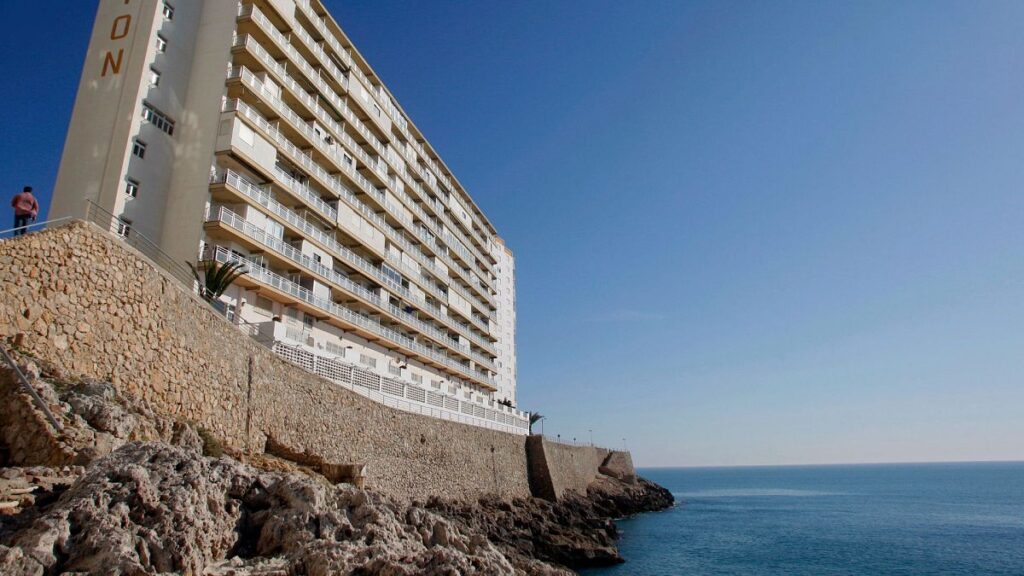Don’t make the biggest purchase of your life without checking these risks first.
For most people, buying a home is the biggest investment of their life. So it makes sense to take every risk into account.
Increasingly, climate change is taking its toll on the property market, damaging and devaluing homes, and driving up insurance costs.
US real estate site Realtor.com announced last week that it is expanding the climate risks on its property listings from fire and flooding, to current and projected future levels of heat, wind and air quality.
Over 40 per cent of US homes are at severe or extreme risk when it comes to these factors, the realtor said in a press release.
Some homeowners are already experiencing their worst effects. Last year, properties from Greece to Italy were swallowed by wildfires, coastal erosion and heavy rains.
Most homeowners will be tied into their mortgage for around 25 years – within which time, if emissions don’t go down, 800 million people will live in cities at risk from sea level rise, according to climate action network C40.
To help you make an informed decision, here are some climate change risks to consider when buying a house.
Check the area’s weather history: Hot weather can lead to subsidence and wildfires
2023 was the world’s hottest year on record – and experts are concerned that 2024 will be even hotter.
As we push past the 1.5°C warming threshold that would help us to avoid the worst effects of climate change, extreme heat will impact everything from our health to our homes.
Prolonged periods of drought and high temperatures rob soil of moisture, causing it to shrink. This can result in ground instability and subsidence, leading buildings to crack and become unstable. Soil also acts as a buffer against drought and flooding – both of which can become worse when soil becomes too dry.
Look at the weather history of the area you are planning to buy in to determine how often temperatures and humidity rose above the local average in recent years.
Unusually warm weather has other worrying effects, like sparking or exacerbating wildfires, which could encroach on properties close to wildland areas such as forests and shrublands – especially if they are also experiencing drought.
As well as being uncomfortable and dangerous, high heat can also lead to higher cooling and maintenance costs, making homeownership more expensive.
The cost of cooling will be lower in homes with efficient insulation.
Check for coastal defences: Flooding and erosion threaten homes
Our oceans are also warming as temperatures dial upwards, causing unprecedented ice melt and sea-level rise, as well as more frequent and intense rain and storms.
This puts coastal homes in grave danger. European communities from England to France are already feeling the effects of coastal erosion with properties being flooded, destabilised and torn away.
If you are considering buying a property vulnerable to coastal erosion, check for the presence of coastal defences, such as a sea wall, that will help to protect it. But bear in mind that these might not be maintained or fit for purpose in future – something that will impact your home’s safety, value and insurance.
Homes built on or near rivers and flood plains are also extremely climate-vulnerable, as changing weather patterns bring heavier rain and more frequent and intense storms. Flooded homes, even when salvageable, can be plagued by structural damage and harmful mould.
Sewage flooding presents an even grimmer risk, one that can be caused by excessive rain. Look at local sewer maps and avoid buying a home built over a sewer or near a weak point such as a manhole cover to reduce your risk. Water companies are also increasingly discharging sewage into rivers when high rainfall threatens their tank capacity, which further puts homes at risk of unsanitary flooding.
Heavy rain can even lead to sinkholes – so watch out for circular depressions in the earth, subsidence, deep puddles and cracks in the ground around your property.
Check your area’s weather history: High winds can cause property damage
Homes that are threatened by storms and flooding are also likely to experience wind damage. If a property could be exposed to winds of over 80 kph, it may need specialised insurance cover for hurricanes.
You can check your area’s weather history on weather data site Visual Crossing.
If you’re looking at homes in areas that are prone to strong winds and storms, you should also watch out for large trees that could fall and cause damage to the property. Extreme winds can fan and spread wildfires, too, putting nearby homes at greater risk.
Property surveyors should draw buyers’ attention to these issues when assessing a building, as they could affect valuation and lending.
Check the air quality index: Pollution can impact property prices
Though low air quality isn’t a direct threat to your home, it can cause health problems and force people to stay indoors. This makes properties in areas with poor air quality less attractive, and potentially less valuable.
Check the average number of poor air quality days – those with an Air Quality Index over 100 – in the area you are planning to buy in.
Low air quality can also be indicative of wildfires, either nearby or far away, with wind patterns that carry the smoke towards your home.
It can also be caused by high road traffic nearby. Check your desired home’s access to walking and cycling paths, as well as public transport. Not only can this mean better air quality, but it can help curb your emissions, so you don’t contribute even more to the problem.

